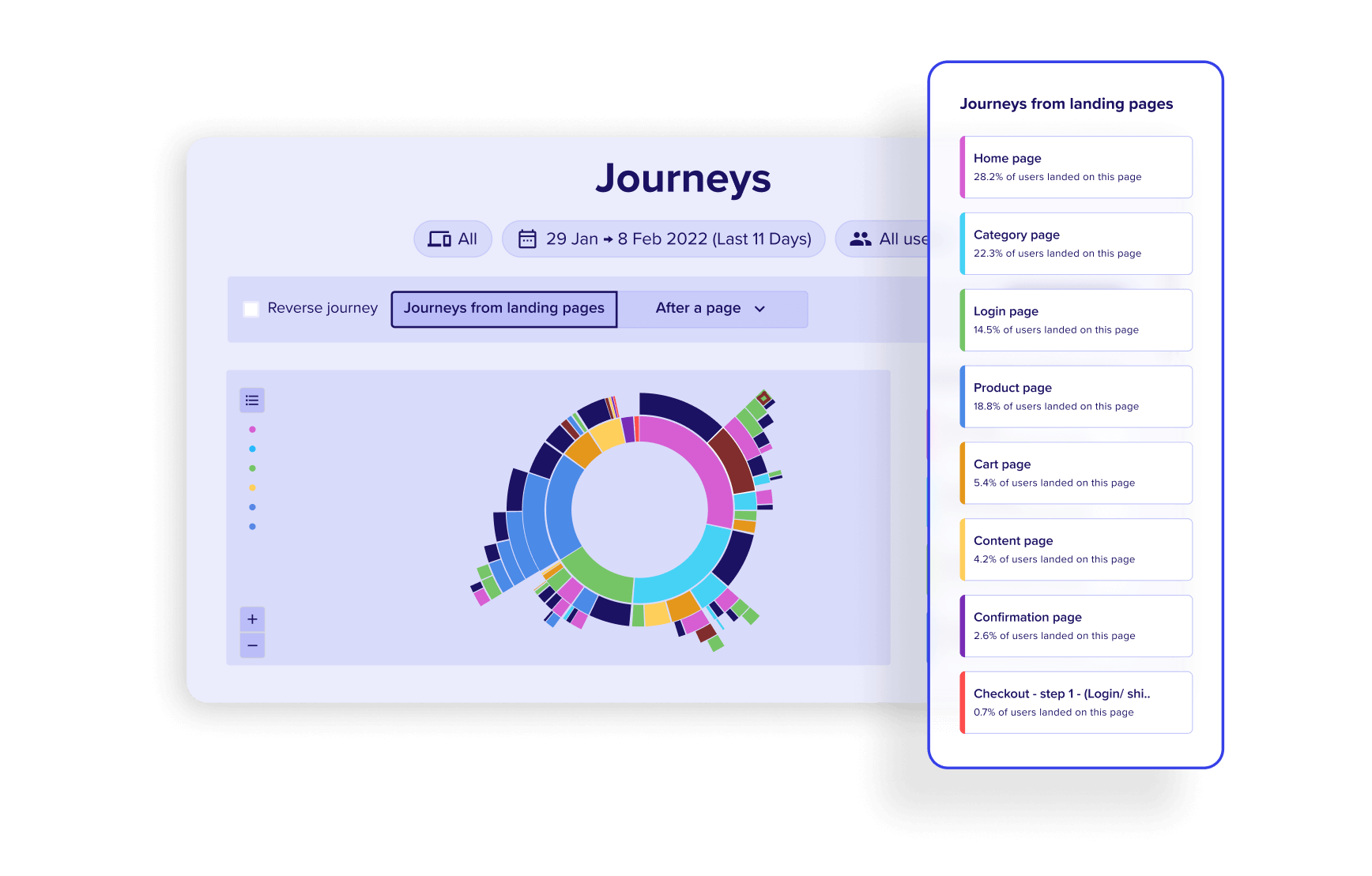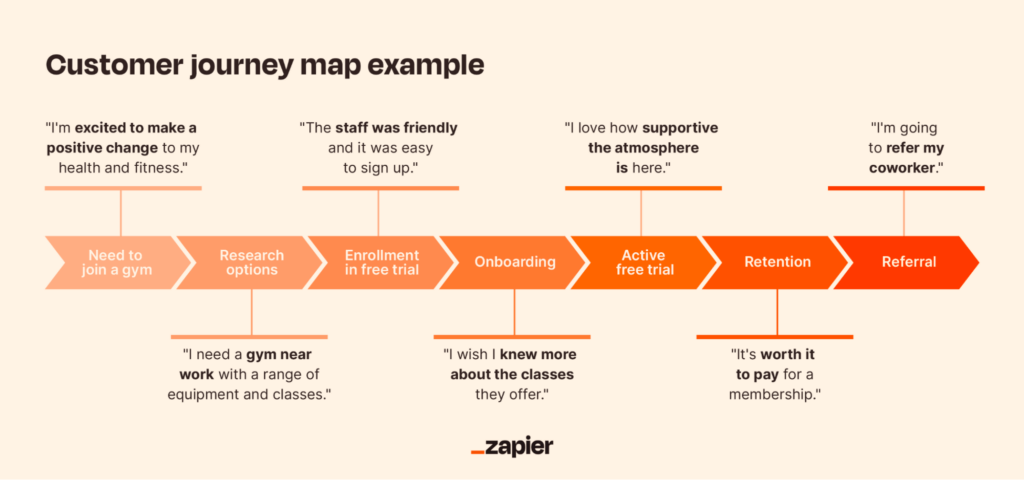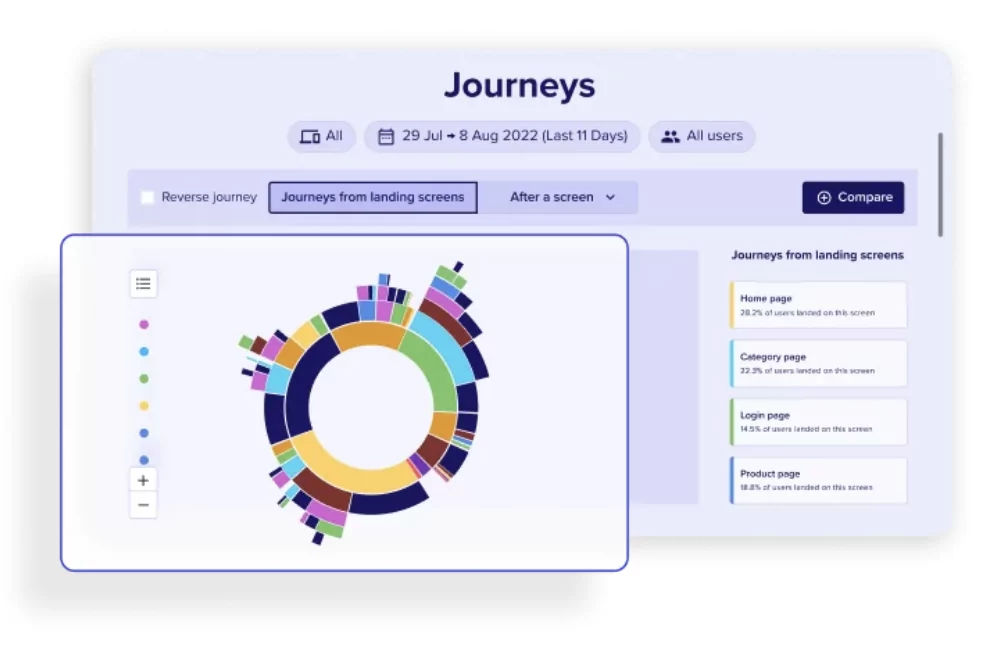
Intuitive visualizations of your customers journey.

Here’s a slightly concerning stat for you: Bounce rates rose to 49% in 2022., compared to 47% in 2021.
This might sound like an insignificant increase, but it actually means there are 4% fewer visitors progressing forward towards a possible conversion.
That’s far from ideal.
With nearly half of all traffic consisting of one-and-done visits, understanding your users’ needs and optimizing their experiences with your brand is pretty important.
But how can you create a truly holistic view of your customer experience and ensure their journey from A to B (via C, D, E and F, etc.) is seamless?
The answer: customer journey mapping.
Customer journey mapping is a powerful tool that helps you understand your customers’ needs, pain points and experiences while identifying areas of improvement.
The process involves mapping out all your touchpoints and visualizing the entire customer journey, from awareness to purchase to post-purchase support.
This comprehensive view is key to optimizing your business KPIs—whether conversions or revenue—and making better, more informed decisions when it comes to your products, services and marketing strategy.
“A customer journey map is a very simple idea: a diagram that illustrates the steps your customer(s) go through in engaging with your company, whether it be a product, an online experience, retail experience, or a service, or any combination.” —Adam Richardson, Harvard Business Review
Intuitive visualizations of your customers journey.
We’ve outlined four simple steps you can take to start your customer journey mapping process.
To drive results, follow these four steps:
Once you’ve finished mapping your journey—depending on what industry you’re in—it could look something like this:

Image source: Zapier
Don’t forget this process takes time, effort and research—you can’t (and shouldn’t) do it alone. Here are a few key things to keep in mind:
In retail banking? Read this blog for our 7 steps to creating a retail banking customer journey map.
Don’t get us wrong, breaking down your customer journey phase by phase is a laborious task but it’s crucial to ensuring the experience you provide is relevant and—most importantly—frictionless.
If you’re still on the fence about journey mapping, here are three benefits to convince you to get started now:
Journey mapping is an eye-opening process. Once you start digging into your customer journeys, you’re likely to identify areas of frustration pretty quickly.
For retailers, for example, journey mapping is beneficial for pinpointing areas where they might be losing customers or where cart abandonment is high.
And knowing where customers struggle will help you prioritize the right optimizations, improve your customers’ experience and even fuel ideas for your experimentation strategy.
Marketers can use the insights from the journey mapping process to create targeted campaigns that promote products to the right audience, at the right time, and in the right way.
Journey mapping can help you level-up your marketing strategy by helping you:
Journey mapping isn’t just for marketing teams. It can play a key role in identifying new product and service opportunities that meet the needs of your customers.
Product owners and dev teams that closely align product development to their customer journeys can reduce the risk of product failure and increase the likelihood of successful adoption.
It’s also a great way to gather customer feedback, which can be invaluable in shaping new product development and identifying unmet needs or areas for improvement.
Qualitative surveys and interviews are extremely powerful tools for gathering insights for your journey map.
But combine that with quantitative data and you’ll hit the sweet spot.
Contentsquare’s Digital Experience Analytics platform provides qualitative and quantitative insights into your customers’ online behavior in real-time—and provides you with a range of tools to help you build a killer customer journey map, including:

Remember, journey mapping is not a one-time process. With Contentsquare you can create a comprehensive journey map and continuously improve on it—helping you stay agile and responsive to ever-changing customer needs.
Intuitive visualizations of your customers journey.